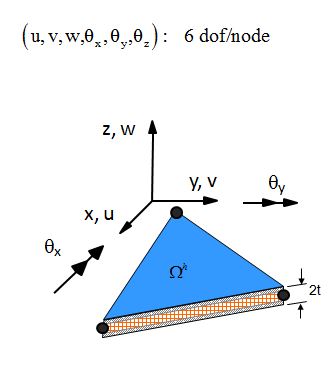


Structural health management systems, which by way of real-time monitoring help mitigate accidents due to structural failures, will become integral technologies of the next-generation aerospace vehicles. Advanced sensor arrays and signal processing technologies are utilized to provide optimally distributed in-situ sensor information related to the states of strain, temperature, and aerodynamic pressure. To process the massive quantities of measured data and to infer physically admissible structural behavior requires robust and computationally efficient physics-based algorithms.
The inverse problem of real-time reconstruction of full-field structural displacements, strains, and stresses is addressed using an inverse finite element method (iFEM) based on shear deformable shell finite element technology. Utilizing surface strain measurements from strain sensors mounted on load-carrying structural components, the methodology enables accurate computations of the three-dimensional displacement field for a general built-up shell structure undergoing multi-axial deformations. The strain and stress computations are then carried out at the element level using strain-displacement and constitutive relations.
The iFEM technology is designed for real-time identification of structural response and failure of complex structures and components subjected to service loads. Potential applications include: (a) Real-time Structural Health Monitoring/Management (SHM): Structural health monitoring involves the embedding of sensors into a structure to allow continuous remote monitoring of structural response and potential damage events. For this application, iFEM can be viewed as the key technology for determining displacements, strains, and stresses using the actual strain-sensor data. (b) Morphing wing technology: Morphing wings involve structures that automatically reconfigure their shapes and surface textures to adapt to monitored changes in flying conditions. Full-field, real-time reconstruction of structural displacements is necessary in order to provide feedback from embedded fiber-optic strain sensors to the actuation and control systems.